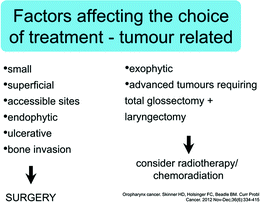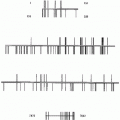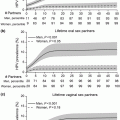Fig. 1
Treatment options of oropharyngeal cancer
An important concept in selecting a surgical approach is to develop a clear “concept of operation”. This means that the surgeon selects the most appropriate operation type according to the results of diagnostic procedures and staging. By selecting the appropriate operation concept, it is possible to achieve the initial aims of the surgery without unnecessary complications. Based on the overall treatment concept, the surgeon chooses the optimal access route, the extent of resection, and the type of reconstruction. Communication between surgeons and other specialists is crucial for the success of the intervention. Numerous factors affect the choice of treatment, including patient characteristics such as age, occupation, general health and co-morbid conditions, lifestyle issues (e.g. refusal to stop smoking), distance from the hospital, and family status. The patient’s opinion and preference for a particular treatment should also be considered. In addition, the expertise of both the centre and the surgeon can also play a role in decision-making. Finally, tumour-related factors (Fig. 2) are an important component of the decision-making process.


Fig. 2
Tumour-related factors in selecting treatment
3 Transoral Surgery
The transoral approach was developed in an attempt to minimize the morbidity associated with open surgery while maintaining oncologic outcomes. Transoral surgery is a minimally invasive treatment that offers many advantages over open techniques, including less damage to the musculature, the major neurovascular structures, and normal tissues (Tateya et al. 2016). Similarly, due to its less invasive nature, transoral surgery allows for quicker recovery and reduced hospital stay, both of which are important advantages for the patient and the hospital (Arens 2012).
Classic transoral approaches are limited to tumours that can be observed directly and manipulated with standard instrumentation and lighting (Dowthwaite et al. 2012). Consequently, in certain oropharyngeal tumour localizations, such as the back of tongue or the tonsillar complex, the classic transoral approach is not feasible due to lack of visualization and access. Magnification and finer instrumentation are needed to access deeper structures in the oropharynx, which is what led to the emergence of TLM in the mid-1990s. TLM, in which an endoscope provides visualization of the pharynx through the mouth while a laser is used to excise the tumour, overcame many of the barriers associated with classic transoral surgery, thus providing an organ preservation strategy that offers excellent local control rates with preservation of vocal and swallowing function (Dowthwaite et al. 2012). Compared to conventional open surgery, TLM minimizes the risk of fistula, flap failure, abscess, and osteoradionecrosis and is associated with a shorter hospital stay. However, TLM is not without drawbacks, the most important being the rigid equipment and the narrow-field view of the laryngoscopes, which make it challenging to manoeuver within the complex anatomy of the oropharynx.
Due in part to technical difficulties with TLM, a newer technique—transoral robotic surgery (TORS)—has been gaining ground in recent years, particularly in tonsillar cancer (Weinstein et al. 2007). TORS overcomes the restricted surgical access and limited view of the oropharynx associated with non-robotic transoral approaches. However, despite the apparent advantages of TORS (smaller incisions, decreased hospital stays, better optics, and improved range of motion of the surgical arms), longer term outcomes are not yet available and the body of evidence, though growing, is still small. Crucially, TORS requires expensive robotic equipment and extensive training, thus making it cost-prohibitive for many centres. For these reasons, among others, conventional approaches are still widely used in OPC.
Overall, the evidence for routine use of transoral endoscopic surgery is based on retrospective findings. However, studies are underway. The available results show that in selected patients as well as in the hands of experienced surgeons, transoral approaches, both endoscopic and classic, are a good alternative to both open organ-preserving surgery with reconstruction by microvascular anastomosed flaps and chemoradiotherapy (Arens 2012).
4 Early-Stage Oropharyngeal Cancer
At many centres, radiotherapy plus concurrent chemotherapy has largely replaced surgery in the treatment of early-stage (T1-2 N0-1) OPC (Lacocourreye 2011). However, it is important to consider the long-term consequences of chemoradiotherapy, which are not insignificant due to the possibility of treatment-related toxicities and the negative impact of failed radiotherapy on subsequent salvage surgery (Machtay et al. 2008). In this sense, an important advantage of surgery is that the excised tissue provides valuable staging information that may obviate the need for additional chemoradiotherapy, thus avoiding unnecessary toxicity. Moreover, survival rates are virtually identical, regardless of whether the primary treatment is surgery or radiotherapy: two-year survival rates for stage T1 patients range from 93 to 95 % for radiotherapy versus 92–100 % for surgery. For T2 tumours, the corresponding rates are 91–93 % for radiotherapy versus 91–94 % for surgery (Daly et al. 2010).
Transoral surgery with elective neck dissection (ipsilateral or bilateral, as appropriate) is generally the surgical treatment of choice in early-stage oropharyngeal tumours, except for the base of tongue tumours, in which definitive radiation therapy ± brachytherapy is preferred. A variety of transoral modalities can be utilized, including TLM, TORS, or even the classic transoral approach depending on the centre’s preferences, experience, equipment availability, and tumour location. Although TLM and now TORS have largely displaced conventional transoral surgery, several studies have demonstrated excellent results with this approach, indicating that, for experienced centres with limited resources, laser and/or robotic systems are not essential to achieving good outcomes (Lacocourreye 2011; Shah et al. 2014).
In cases of recurrence, salvage surgery is the treatment of choice. Indeed, another argument in favour of primary surgery versus primary radiotherapy is that salvage treatment for local recurrence is not always possible after primary radiotherapy; in addition, even when salvage surgery is feasible, it is always associated with a significantly higher rate of post-operative complications. Finally, curative and function-sparing treatment options for metachronous second primary tumours in the upper aerodigestive tract are severely limited if the primary tumour was treated with radiotherapy.
4.1 Nodal Disease and Neck Metastases
The risk of occult neck metastasis is high, even when the neck is clinically negative for nodal involvement. For this reason, elective neck dissection, which may be ipsilateral (in lateralized tonsil primaries) or bilateral (midline tumours), is usually performed.
4.2 Soft Palate
Although most patients with early-stage OPC of the soft palate are treated with radiotherapy, both surgery and radiotherapy achieve comparable rates of survival and locoregional control. For T2NO tumours, a transoral approach with TLM can be used, with wound healing by secondary intention or reconstruction with split thickness skin graft.
4.3 Base of Tongue
Tumours in this location are usually more aggressive than other localizations. In most cases, radiotherapy plus brachytherapy is used for this localization (NCCN guidelines file, n.d). Since occult nodal metastasis is common, lymph node dissection is recommended in patients who undergo surgery. In carefully selected patients, TLM may improve local control and functional results (Steiner et al. 2003).
4.4 Tonsillar Complex
Outcomes with primary surgery or radiotherapy are essentially equivalent. For small tumours (T1N0) confined to the tonsil, simple tonsillectomy using the transoral approach with electrocautery is sufficient. However, more extensive resection may be needed if the tumour extends beyond the tonsil and may require an anterior approach with mandibulotomy and a transhyoid approach, or, alternatively, TLM, or TORS.
5 Advanced Oropharyngeal Cancers
In advanced cancers (T3-4a, N0-N1), both chemoradiotherapy and conventional surgery can be used, depending on the localization and expertise of the hospital. The surgical approach typically consists of conventional surgery followed by PORT or CRT. In patients with advanced disease, surgery offers a notable survival advantage over radiotherapy (Díaz-Molina et al. 2012): at five years, rates of overall survival and disease-specific survival (DSS) are 24–58 % and 33–63 % for radiotherapy plus chemotherapy compared to 38–56 % and 52–73 % for surgery plus PORT. Surgery requires an extensive resection of the visible or palpable tumour. A 2-cm margin should be applied, if feasible, with frozen section analysis performed to assess the surgical margins. The specific surgical approach depends in large measure on the tumour localization, and adequate visualization is essential. For this reason, an open approach with lip-splitting mandibulotomy is often required. For tumours of the tonsillar complex or base of tongue tumours, mandibulotomy is the treatment of choice, although lateral pharyngotomy may also be considered for the tonsillar complex. In some cases, partial mandibular resection may be used. Reconstruction options include primary closure, pedicle or free flaps, and skin grafts.
In most cases, radical neck dissection is mandatory due to local spread. Neck dissection depends on the nodal status. Patient with N0 status usually undergoes prophylactic selective neck dissection, either unilateral or bilateral (midline lesions). In clinical N1 disease, selective neck dissection (including levels I–IV) is recommended. Finally, in patients with more advanced nodal disease (clinical N2/N3), a modified radical neck dissection is necessary.
As with early-stage tumours, the only viable treatment option in case of recurrence is salvage surgery.
5.1 Soft Palate Tumour
Stage T3N2b soft palate tumours are managed by transoral resection with radical neck dissection reconstruction and radial forearm free flap (RFFF).
Stay updated, free articles. Join our Telegram channel

Full access? Get Clinical Tree







